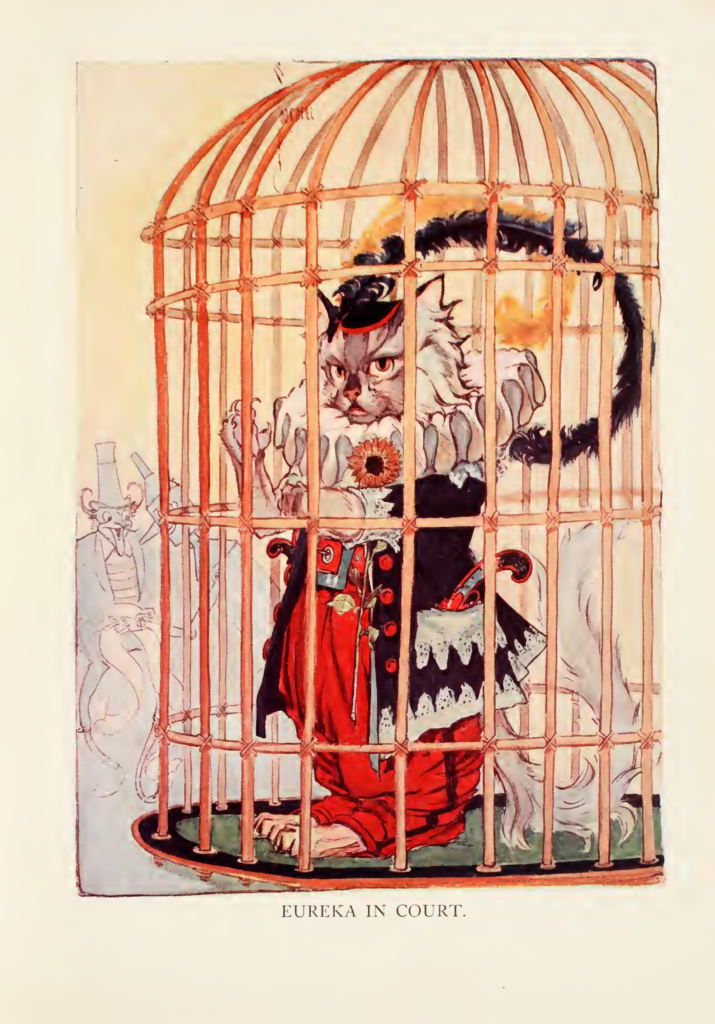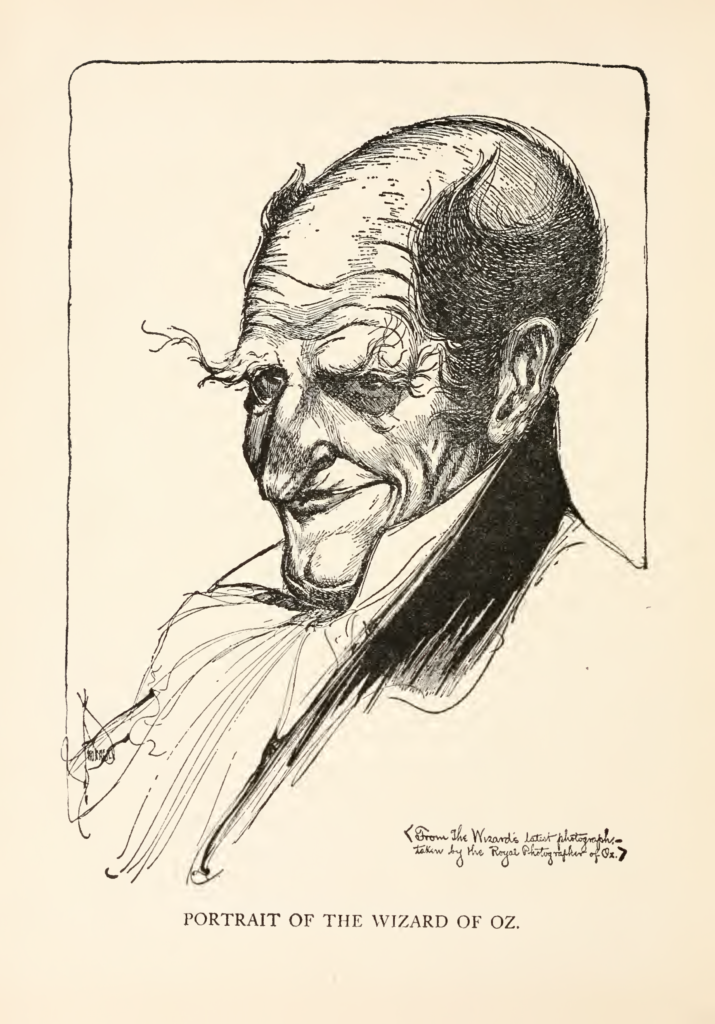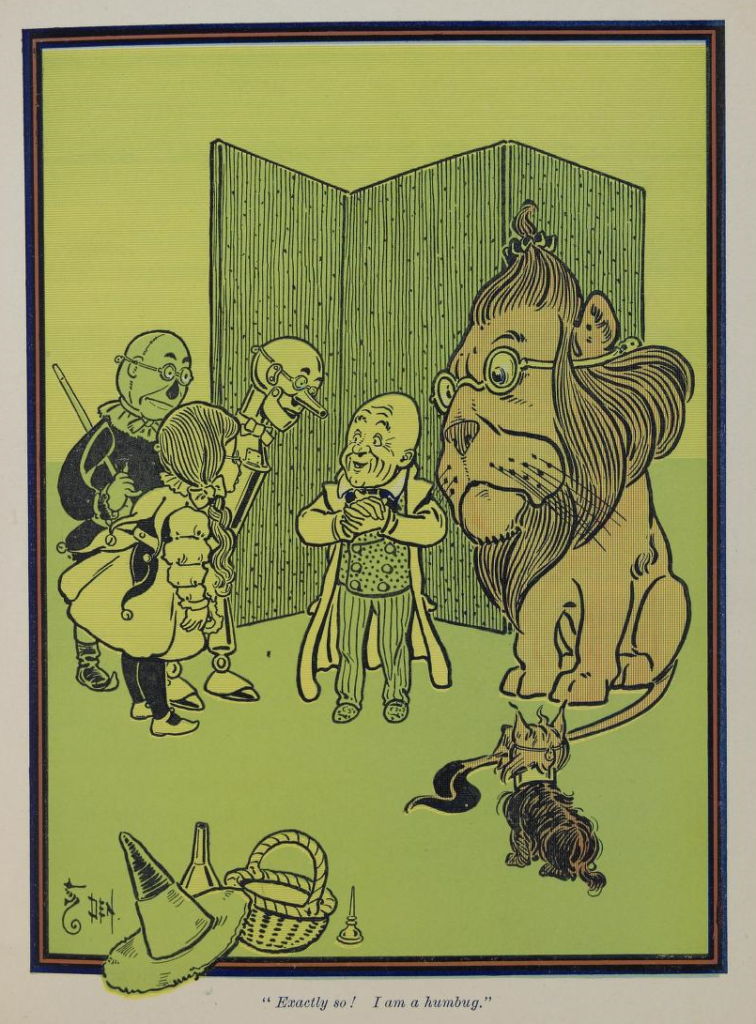The illustrations that remain without color also mark a considerable shift. Neill has switched from favoring clean lines to a much scratchier, messier style that would become his standard. They are all expressive and fun.


Strangely, though the text never seems to indicate that Eureka is anything but a normal kitten, Neill consistently draws her wearing human clothing and, eventually, standing on two legs in full dress complete with an Elizabethan collar and a holstered pistol.

As Neill depicts him, the Wizard is ugly and quite frightening. He has a hooked nose, sunk-in eyes, furry yet thin eyebrows, and hair that comes to two horn-like tips, as though he is a devil. An appearance like an evil clown may suit the Wizard, who is a circus performer at “Bailum & Barney’s Great Consolidated Shows” (48). The most dynamic character of the novel, the Wizard becomes a complex figure. The rest of this post is going to be discussing him and the wrinkles Dorothy and the Wizard in Oz introduces to the backstory.

None of the frightening features of Neill’s Wizard are present in The Wonderful Wizard of Oz, where Denslow portrays the Wizard, once Toto reveals the truth behind his various illusions, as a cute, tiny, Mr. Magoo-like old man. (Though the Wizard predates Mr. Magoo.)

Instead of a monster or a floating head or a beautiful woman or a ball of flame, “Oz the Great and Terrible” turns out to be almost baby-like when revealed for the “humbug” he is: some ventriloquist from Omaha. The Wonderful Wizard version of the character assists Dorothy’s friends by giving them false versions of the qualities they believe they lack, but he is also a villain, deceiving the public through various tricks and attempting to dispose of the nosy protagonists by sending them into Winkie country, where the Wicked Witch of the West indeed almost kills them. The Marvelous Land of Oz increases the Wizard’s villainy by establishing him as an invader who conspired with Mombi to remove Ozma and rule the Emerald City for years prior to Dorothy’s arrival. Neill’s devilish Wizard seems to reflect this background: the Wizard is a selfish, wily conman whom Dorothy did Oz a favor by removing.